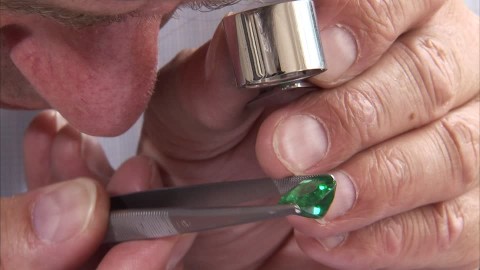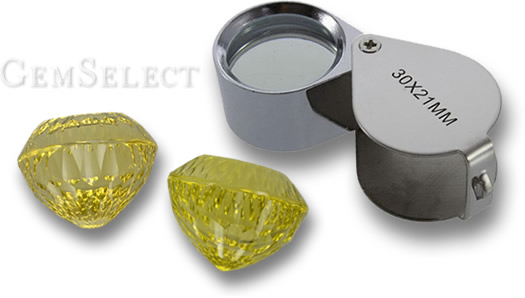People often email us photos of gemstones and ask us for help in identifying their stones. We try to be helpful, but even the best gemologist in the world cannot properly identify a gemstone from a photograph. Indeed, even a detailed visual inspection of the actual gemstone is rarely sufficient for gemstone identification.
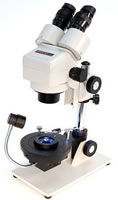 The systematic study of gemstones has come a long way since the days when any attractive red stone was called a ruby. Today gemologists have to be able to identify over 200 different varieties of gemstones, as well as detect an ever-growing list of gem treatments and synthetics. What once was an art has now become a science, and gemstone identification without careful measurement is just guesswork.
The systematic study of gemstones has come a long way since the days when any attractive red stone was called a ruby. Today gemologists have to be able to identify over 200 different varieties of gemstones, as well as detect an ever-growing list of gem treatments and synthetics. What once was an art has now become a science, and gemstone identification without careful measurement is just guesswork.
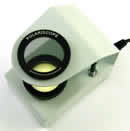 Every type of gemstone has a unique set of physical and optical properties. These include not only color and luster, but also hardness, specific gravity (also called density), and refractive index. Although several types of gemstones may have approximately the same specific gravity or the same particular refractive index, each gem type has a unique profile that is a combination of the results of all the basic tests. It is not recommended to use only one test to identify a gem unless a gemstone possesses a very unique trait that can be determined by a single test.
Every type of gemstone has a unique set of physical and optical properties. These include not only color and luster, but also hardness, specific gravity (also called density), and refractive index. Although several types of gemstones may have approximately the same specific gravity or the same particular refractive index, each gem type has a unique profile that is a combination of the results of all the basic tests. It is not recommended to use only one test to identify a gem unless a gemstone possesses a very unique trait that can be determined by a single test.
 The basic gemological tools are not difficult to learn to use. They include the simple 10x loupe (a powerful tool in the hands of an expert), the refractometer (for measuring refractive index), the polariscope (for identifying singly and doubly refractive gems), and a scale accurate to the 1/100th of a carat (for measuring specific gravity).
The basic gemological tools are not difficult to learn to use. They include the simple 10x loupe (a powerful tool in the hands of an expert), the refractometer (for measuring refractive index), the polariscope (for identifying singly and doubly refractive gems), and a scale accurate to the 1/100th of a carat (for measuring specific gravity).
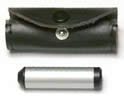 The binocular microscope is an extremely important tool. It can be used to reliably detect signs of heat treatment or fracture filling, for example, though considerable skill and experience are required. Some forms of treatment can only be detected by specialized and expensive equipment. Detecting radiation treatment requires the use of gamma-ray spectroscopy, and beryllium treatment of sapphire is most reliably detected with a procedure known as LIBS (Laser-Induced Breakdown Spectroscopy). You’re unlikely to find these tools at your local gemology lab.
The binocular microscope is an extremely important tool. It can be used to reliably detect signs of heat treatment or fracture filling, for example, though considerable skill and experience are required. Some forms of treatment can only be detected by specialized and expensive equipment. Detecting radiation treatment requires the use of gamma-ray spectroscopy, and beryllium treatment of sapphire is most reliably detected with a procedure known as LIBS (Laser-Induced Breakdown Spectroscopy). You’re unlikely to find these tools at your local gemology lab.
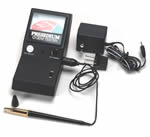 A well-trained gemologist with vast experience in a particular kind of gem can often provide very detailed information about a gemstone, including information about its origin. This sort of informed judgment about origin needs to be distinguished from quantitative tests that yield definitive conclusions about the type of gemstone. This is usually reflected in the wording of certificates issued by gemology labs. While the lab can conclusively identify the material as ruby (corundum); it can say only that the observed characteristics are consistent with the material being mined in Madagascar, for example. Gemology has become a science, but there’s still some art left in it.
A well-trained gemologist with vast experience in a particular kind of gem can often provide very detailed information about a gemstone, including information about its origin. This sort of informed judgment about origin needs to be distinguished from quantitative tests that yield definitive conclusions about the type of gemstone. This is usually reflected in the wording of certificates issued by gemology labs. While the lab can conclusively identify the material as ruby (corundum); it can say only that the observed characteristics are consistent with the material being mined in Madagascar, for example. Gemology has become a science, but there’s still some art left in it.
Source: https://www.gemselect.com/other-info/gemstone-identification.php

